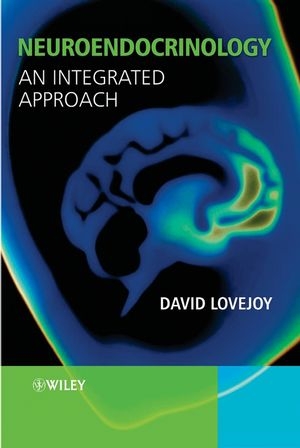
Neuroendocrinology
John Wiley & Sons Inc (Verlag)
978-0-470-84432-8 (ISBN)
- Titel z.Zt. nicht lieferbar
- Versandkostenfrei innerhalb Deutschlands
- Auch auf Rechnung
- Verfügbarkeit in der Filiale vor Ort prüfen
- Artikel merken
There has been an explosion of interest in the field of neuroendocrinology over the last twenty years with the discovery of neurohormones regulating virtually everything from growth and development to sexual and aggressive behavior. This book provides a much-needed introduction to neuroendocrinology from a zoological and evolutionary perspective. It covers the evolution, development and description of the neuroendocrine system throughout the animal kingdom.
Specific topics covered include:
The Evolution of early neuroendocrine systems in primitive animals
Structural characterisation, molecular biology and biochemistry of neuroendocrine agents
A profiles section on unusual aspects of neuroendocrine physiology written by leaders in the field
A unique section on the actions of environmental chemicals effect neuroendocrine systems in various species
Dr. David. A. Lovejoy, Department of Zoology, University of Toronto, Toronto, Ontario, Canada.
Foreword.
Acknowledgments.
1. History of Neuroendocrinology and Neurohormones Introduction.
Early history of physiology.
Renaissance and the growth of western science.
Scientific revolution.
The 19th-century physiology and medicine.
Neurosecretion and the hypothalamus--pituitary regulation.
Chapter summary.
2. Origin of Life and the First Signalling Molecules.
Introduction.
Theories of the evolution of the first cells.
The first cells.
The first true signalling hormones.
Chapter summary.
3. Rise of Metazoans and the Elaboration of Signalling Systems.
Introduction.
Colonialism and multicellularity.
The elaboration of hormone pathways
Nervous systems and rudimentary neuroendocrine systems.
Increase in genetic complexity and the rise of triploblastic organisms.
Chapter summary.
4. Elaboration of Neuroendocrine Systems.
Introduction.
Elaboration of nervous system and development of organismal complexity.
Nervous and neuroendocrine systems in phylogenetically younger invertebrates.
Nervous and neuroendocrine systems in the deuterostomes.
Peripheral and autonomic nervous systems.
Blood--brain barriers.
Cerebrospinal fluid and the choroid plexus.
Neurohaemal and circumventricular organs: Neurovascular interfaces.
Hypothalamus--pituitary gland complex.
Chapter summary.
5. Neurohormones and Receptors: Structure, Function and Co-evolution.
Introduction.
Orthology and paralogy.
Structural description of non-peptide ligands.
Peptide and polypeptide signalling molecules.
Structure and classes of receptors.
Receptor--ligand interactions.
Receptor--ligand co-evolution.
Chapter summary.
6. Osmoregulation, Metabolism and Energy Production.
Introduction.
Osmoregulation.
Role of prolactin.
Feeding and appetite regulation.
Neural circuitry associated with feeding.
Chapter summary.
7. Growth and Development.
Introduction.
Growth and the growth hormone, prolactin, somatolactin superfamily.
Metamorphosis and development.
Sexual differentiation.
Mechanisms of ageing.
Chapter summary.
8. Biological Rythms.
Introduction.
Origin of biological clocks.
Circadian rythms.
Infradian rythms.
Clock circuitry in vertebrates.
The role of melatonin.
Chapter summary.
9. Stress, Arousal and Homeostatic Challenge.
Introduction.
Physiology and behaviour associated with stress Components of the stress-response system.s
Corticotropin-releasing factor superfamily of peptides.
Proopiomelanocortin and adrenocorticotrophic hormone.
Integration of HPA/I components with other systems.
Complementary neuroendocrine circuits associated with stress.
Chapter summary.
10. Reproduction.
Introduction.
Selection of sexual reproduction.
Regulation of reproduction.
Gonadotrophin-releasing hormone.
Gonadotrophins and their regulation.
Neuroendocrine regulation of the HPG axis.
Pregnancy, parturition and lactation.
Seasonal reproduction.
Reproduction and stress.
Chapter summary.
11. Behaviour, Learning and Memory.
Introduction.
Basic behavioural circuits.
Memory.
Motivation: Reward and fear.
Stress and the modulation of learning and behaviour.
Hormonal facilitation of behaviour.
Galanin modulation of neurological circuits.
An integrated approach to behavioural modulation.
Neurodegeneration and trauma.
Chapter summary.
12. Pheromones and Chemo-attractants.
Introduction.
Evolution of pheromones.
Classification of pheromones.
Pheromones in invertebrates.
Pheromones in vertebrates.
Physiological actions of vertebrate pheromones.
Pheromones in mammals.
Chapter summary.
13. Xenobiotics and Hormone Mimics.
Introduction.
Types of xenobiotics.
Vertebrate toxins and defences.
Toxins and xenobiotics in invertebrates.
Toxins and hormone mimics in plants.
Hormone mimics from anthropogenic sources.
Chapter summary.
Glossary.
References.
Index.
| Erscheint lt. Verlag | 1.9.2005 |
|---|---|
| Verlagsort | New York |
| Sprache | englisch |
| Maße | 170 x 244 mm |
| Gewicht | 753 g |
| Themenwelt | Naturwissenschaften ► Biologie |
| ISBN-10 | 0-470-84432-9 / 0470844329 |
| ISBN-13 | 978-0-470-84432-8 / 9780470844328 |
| Zustand | Neuware |
| Haben Sie eine Frage zum Produkt? |
aus dem Bereich


